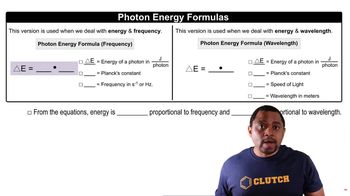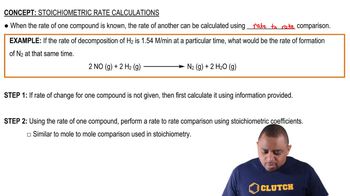Here are the essential concepts you must grasp in order to answer the question correctly.
Molarity and Solution Concentration
Molarity (M) is a measure of concentration defined as the number of moles of solute per liter of solution. In this question, the naphthalene solution has a concentration of 0.100 M, meaning there are 0.100 moles of naphthalene in one liter of hexane. Understanding molarity is essential for calculating the total number of naphthalene molecules present in the given volume of solution.
Recommended video:
Photon Emission and Energy
When a molecule absorbs energy, it can become excited and subsequently release energy in the form of a photon when it returns to a lower energy state. The energy of the emitted photon can be calculated using the equation E = hc/λ, where E is energy, h is Planck's constant, c is the speed of light, and λ is the wavelength. This concept is crucial for determining how many molecules emitted photons based on the total energy released.
Recommended video:
Percentage Calculation
To find the percentage of naphthalene molecules that emitted a photon, one must compare the number of molecules that emitted photons to the total number of naphthalene molecules present in the solution. This involves calculating the total number of molecules using Avogadro's number and then using the formula: (number of emitting molecules / total number of molecules) × 100%. This concept is fundamental for expressing the result as a percentage.
Recommended video:
Stoichiometric Rate Calculations




